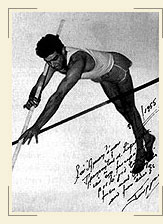|
 Did you know?
Did you know?
- For the first time female athletes carried the flags at the parade of the teams during the opening ceremony. 67 countries participated in the  Olympic Games with 3,100 athletes approximately, among whom almost 400 were women. Chile and Argentina were the countries that had female athletes as carriers of the flags in the parade of the athletes. Olympic Games with 3,100 athletes approximately, among whom almost 400 were women. Chile and Argentina were the countries that had female athletes as carriers of the flags in the parade of the athletes.
- Avery Brundage was the third most long-lived president of the IOC. The first president of the IOC was Dimitrios Vikelas (Greece) from 1894 until 1896. After the first modern Olympic Games, the presidency of the IOC was awarded to Pierre de Coubertin (France), who held the title until the 1924 Paris Olympics. Between 1925 and 1942 the president of the IOC was Henri de Baillet-Latour (Belgium) followed by J. Sigfrid-Edstrom (Sweden) from 1945 until 1952, Avery Brundage (USA) from 1952 until 1972, Lord Killanin (Great Britain) from 1972 until 1980, Juan Antonio Samaranch (Spain) from 1980 until 2001 and Jacques Rogge (Belgium) from 2001 until today. The most long-lived president has been P. Coubertin (29 years) and the next two were J.A. Samaranch (21 years) and A. Brundage (20 years). However, the term of presidency of Brundage should include the period between 1942 and 1945, because after the death of Henri de Baillet-Latour the duties of the president were performed by the vice president Brundage.
- Less than 800 journalists and photographers covered the Olympic Games of 1956. The number is small compared, for example, to the 3,000 media representatives who had attended and broadcast the 1936 Berlin Olympics. What is more, the Games had not been broadcast on television outside Australia, seeing that the television networks did not agree with the IOC as to the selling of the rights of television broadcast of the Games. Nevertheless, the Games were filmed and the rights were sold to news agencies.
- In 1956 it was the first time a fibreglass pole was used in the Olympic Games. The athlete who first placed his trust in that innovation was the Greek Georgios Roumbanis, who won the bronze medal with a performance of 4.50m. That was the first Olympic medal awarded to a Greek athlete after 1912, when Kostis Tsiklitiras won a gold and a silver. In 1957 Roumbanis broke the European record with a jump of 4.55m. Although the use of the new pole was common especially in the United States since the mid-1950s, only a few athletes used it. Roumbanis, who studied in the USA at that time, adopted the use of the new pole. However, time was required to understand the technique and advantages of the new pole. As a result, the first world record was set in 1961.
- Laszlo Papp won his three gold Olympic medals in two different categories. In 1948 he won in the light-middleweight category, which was then 71 kg. In 1952 and in 1956 due to the reorganization of the categories, he was the winner of the middleweight, in the 73 kg. The other two athletes who won a gold medal in the Olympic Games were the Cuban Teofilo Stevenson (1972, 1976, 1980) and his compatriot Felix Savon (1992, 1996, 2000).
- For the first time in the Games of 1956 an athlete from the Soviet Union dominated the long distances. That athlete was Vladimir Kuts, winner of the 5,000m and 10,000m. Kuts's first distinction was in the European games of 1954, when he won the 5,000m event setting a new world record, in a race where participated Emil Zatopek, who was the record holder until then.
|